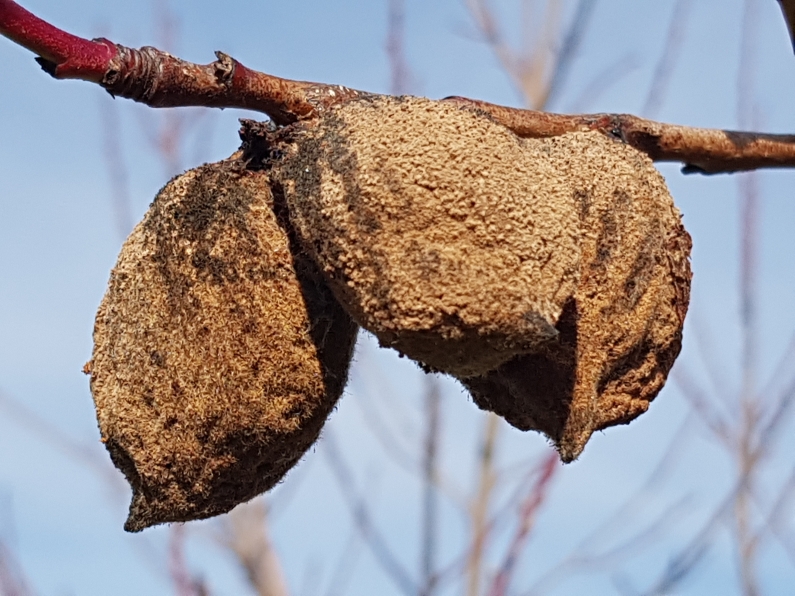
Regional roundup of flowering phenology
NIWA is predicting unsettled weather in parts of New Zealand for spring and as I write this it is still raining. I have had 3 covers on my home orchard in 7 days, following the old adage of half an inch of rain, half the cover gone – time to put it back on.
Cromwell has apricots at petal fall and peach and nectarine at or approaching full bloom. The weather has been dry and mild but may not stay that way for long according to the NIWA predictions.
Blenheim cherries are well and truly under way with white showing in the expanding buds, perhaps a week later than last season. They have had some rain, 30 odd millimetres and not hot. A bit of drizzle is predicted but it’s cool and no real infection period is predicted. Have a look on the Portal at the brown rot prediction model for your area.
Hawkes Bay have apricots nearing shuck fall in the early variety and bloom in others. Peach, nectarine and plum have flowered or are flowering depending on variety. Cherries vary, some are at bud break and others at green tip with not much white showing yet. There has already been a severe brown rot infection period, and another is due very soon. It smacks of ‘here we go again’. And it is cold after a mild late winter.
What’s new and what have we learned?
For the last few months we have been talking about the benefits of orchard hygiene, specifically destroying all of the prunings and mummies. Plant and Food Research trials have shown double mulching to be 100% effective in the fight against botrytis overwintering stages in Central Otago, so by extension this seems like a really good idea for brown rot control.
A major report has landed on the Portal, “Managing Pathogen Resistance in Summerfruit”, which is the result of 3 years of work by Plant and Food on our behalf. It is a biggish read but well worthwhile. I have summarised a few of the findings with regards to brown rot, but please take the time to have a look for yourself, and at the botrytis work which is not summarised here.
(Portal/main menu/all documents/ ‘Research Projects – Managing Pathogen Resistance in Summerfruit’; and it’s on the 43 line down the list)
The brown rot work was carried out in Hawkes Bay on peach and nectarine and to some extent mirrors the findings for botrytis in Central Otago.
Some of the key findings include:
- Several fungicides were tested for brown rot resistance and all were found to be working at field rates, although there is some change in sensitivity – an early warning signal.
- Resistance to Chorus® was detected for the first time, such that some strains of brown rot are no longer controlled.
- Some strains are no longer controlled by Prolific® at field rates.
- Variable control of some strains with Rovral®
- The SNZ-SFF programme controlled brown rot better than the standard programme
Recommendations that have come from the 3-year research programme including the benchmarking report are:
- Get a resistance test done if you suspect that chemical control is not what it could be. There are guidelines on the Portal or call Richard on 021 632 559.
- Learn about FRAC groups for the chemicals that are used. Your rep will be able to help with this.
- Always mix two different FRAC group chemistries in one tank. One of these maybe from the protectant, M group.
- Alternate different FRAC groups from one spray to the next.
- To prolong the use of Chorus it recommends mixing with Folicur®/Hornet®/Cornet®
- Mix in another chemical when using Luna Sensation® and Merivon®.
As an industry we need to do a lot better with mixing and alternating of sprays to preserve the life of the chemistry that we have. The Agchem reps are an important part of getting better results and retaining the active life of the chemicals. There has been discussions with the three major retailers regarding a refined approach to the season, so hopefully we can have a relatively disease-free season and retain effective chemistry for future years.
A summary of the Summerfruit NZ-SFF spray programme could be:
- Use the best chemistry available during periods of strongest need.
- Always mix more than one product in the tank.
- Always alternate chemistry.
This 3-year research programme has now come to an end, so now it’s time to consolidate the results into best and normal practise, while we wait for Sensational Summerfruit to kick into gear.
